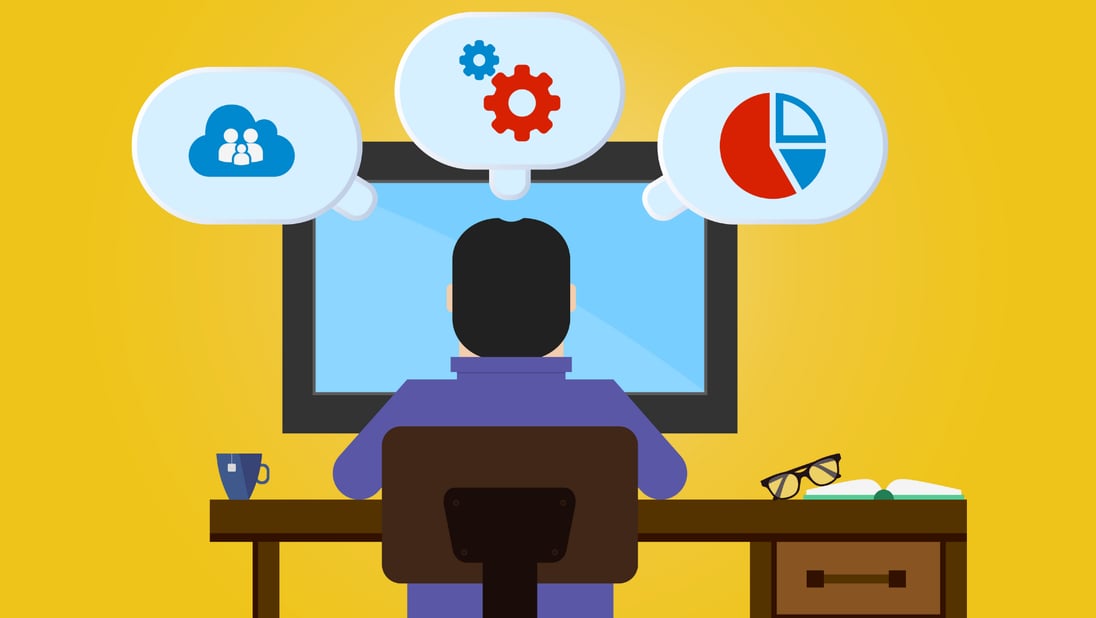Creating a high-quality learning and development program is going to take some initial capital to get off the ground, which often requires buy-in from company stakeholders.
In the first blog of our learning and development series, we explored the benefits that L&D can have across your company. Today, we're reviewing how you can get your learning and development program off the ground.
To get your CEO, CFO, or General Manager onboard you have to be able to prove the value of a learning and development program. We look at two approaches you can take when speaking to your company’s stakeholders about L&D: performance and financial outcomes.
Hands-on Learning Leads to Better Outcomes
Traditional training manuals are helpful resources to be able to recall processes in a pinch. However, for learning new skills or a new technology for the first time, static materials may not get your company the learning outcomes you need.
Hands-on learning is tied to better learning outcomes. Better yet, hands-on learning with real-world application will ensure your team is more engaged than with general application training. This is why it’s important to advocate to stakeholders that a program specifically designed with your company’s goals and objectives in mind is better for business than canned content found on the internet.
What should you look for in a learning and development platform or product? Control, accessibility, flexibility, and scalability.
Control
We’ve all come across platforms that offer pre-built video trainings. Maybe this kind of training is a convenient steppingstone, however it won’t yield the results you or your stakeholders look for. That’s why you should find products that give you the control to design your own onboarding program. This gives you the ability to ensure that your team is getting quality content, as well as learning the exact skills you need them to perform.
A great partner will work with you to build the learning and development program you need, not sell you a program from their archives.
Accessibility
Who is on the other side of the computer screen matters. If anyone on your team has an audio or visual impairment, your learning and development program needs to account for that. If your up-skilling program doesn’t cater to the needs of your team, the learning experience suffers. What should you look for? Contrasting colors for text and closed captions for videos. Many solutions will even offer an array of color themes so that you can choose which works best for your people.
You also want to ensure that everyone can easily access your trainings from anywhere, at any time. With shifts to remote work being seen across a variety of industries, almost everything needs to be online or cloud-based these days. Training programs that are only accessible from the office might not work for employees who work remotely or use their time after hours to practice their skills.
Flexibility + Scalability
Your business needs can change at the drop off a dime. Perhaps you’ve adopted a new technology that impacts your day-to-day operations, and you need all of your engineers to get on board. Or maybe you’re building out a new managerial training program. Whatever the case is, you should look for platforms that will grow with you.
Questions to ask before investing in an up-skilling product include:
-
How many user licenses will I need?
-
Can I add more licenses to scale my program?
-
Will I be able to offer more trainings than I originally build?
Every business operates differently than the next, so there is no cookie cutter platform to serve your exact needs. Don’t be shy about investing a bit of your time to build a program that is catered to your team. If enlisting the help of a partner, ensure that they understand your directive and can help build a platform based on better learning outcomes.
Make Money or Save Money
You know what they say, you have to spend money to make money. This may be the case with your learning development program, or you may have to spend money to save money. Before approaching management, you should research which of these outcomes is more likely after you implement a training programming.
How can learning and development programs help impact the company’s bottom line? Let’s create a scenario to explore this question further. Consider a technical support team helping customers work through bugs in software. When you invest time in training your team new skills that will help them work through issues faster, your customers receive higher-quality support. Satisfied customers open up a world of possibilities when it comes to contract renewals, upselling opportunities, and even referrals. A more efficient, knowledgeable workforce helps your company.
You may also ask yourself, how can spending money save me money? When your team is filled with the skills that you need to run your business, or is moldable and eager to grow, you often don’t have to resort to external hiring to fill gaps on your workforce. You can expect to save thousands of dollars when you choose to up-skill one worker, versus recruiting and interviewing dozens of job applicants.
Whichever the case, your company’s stakeholders are going to want to see the numbers behind it before buying into your program.
For the final installment in this blog series, we will look at how you can use Codio to build a better L&D program.

